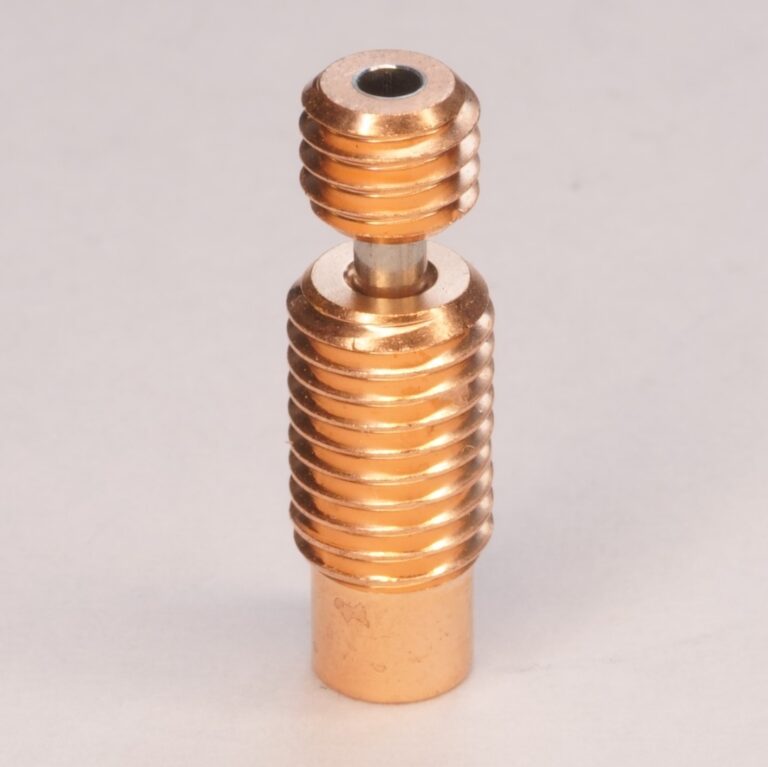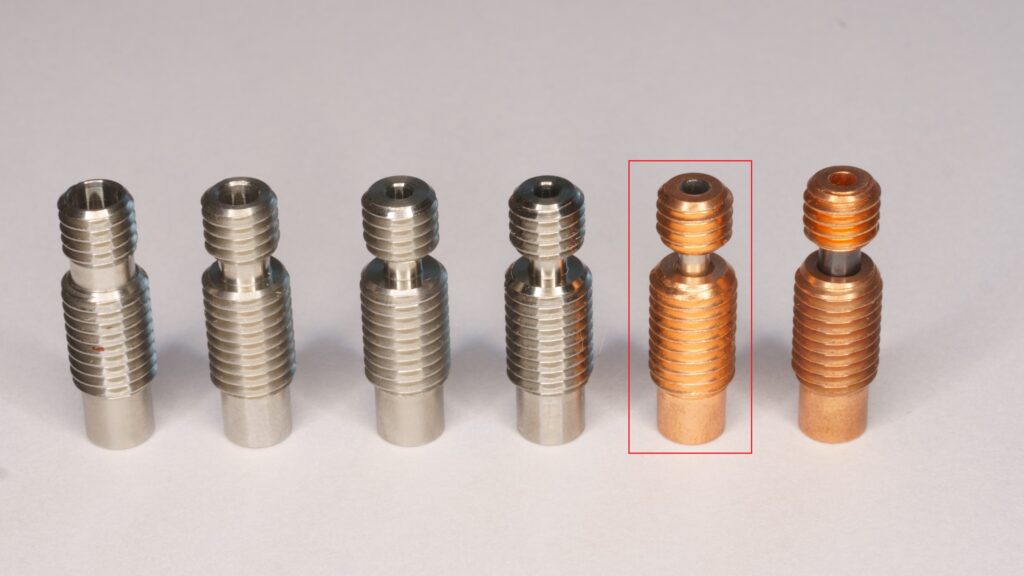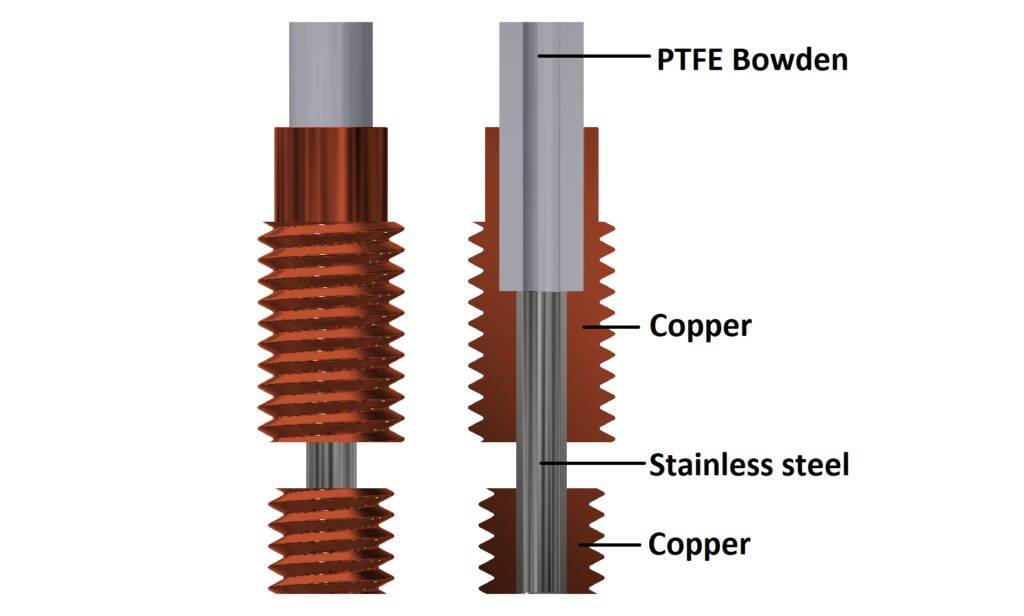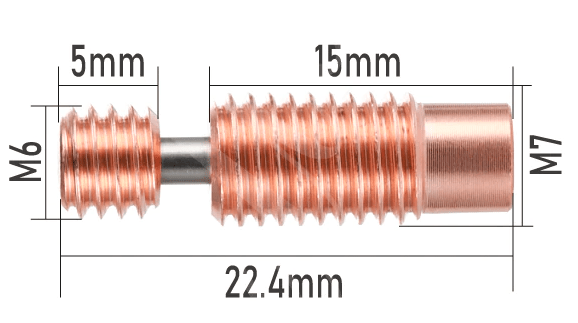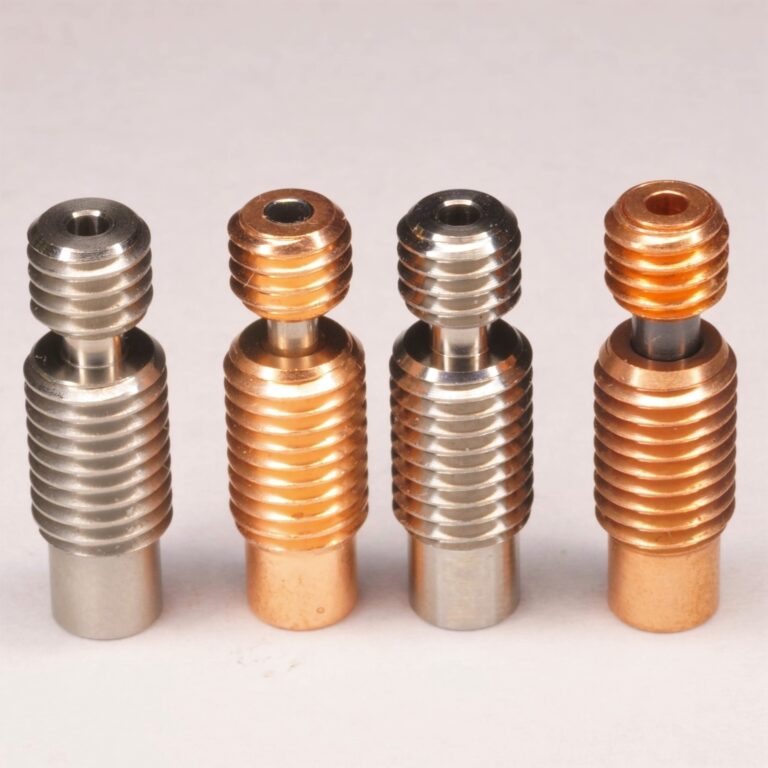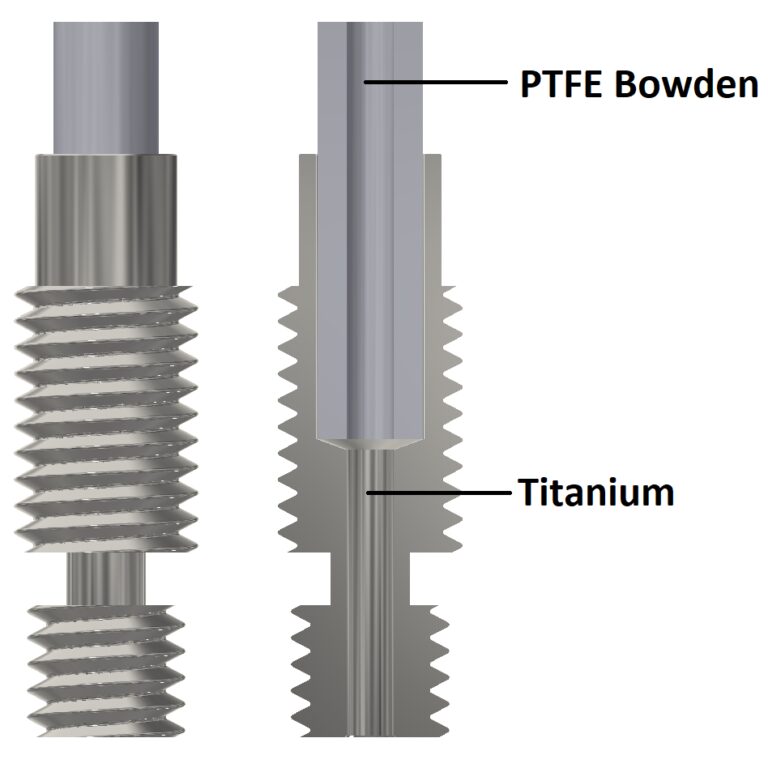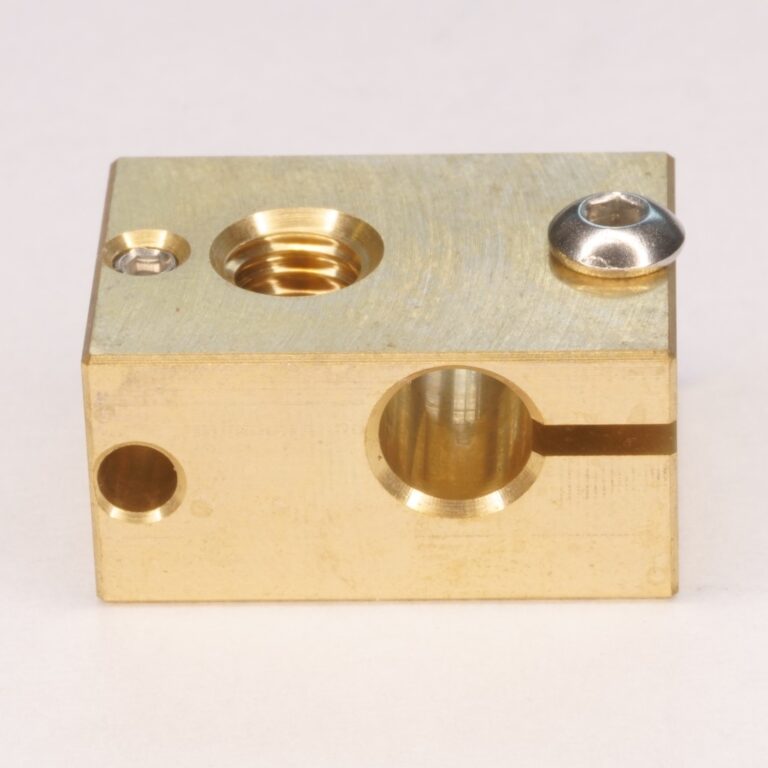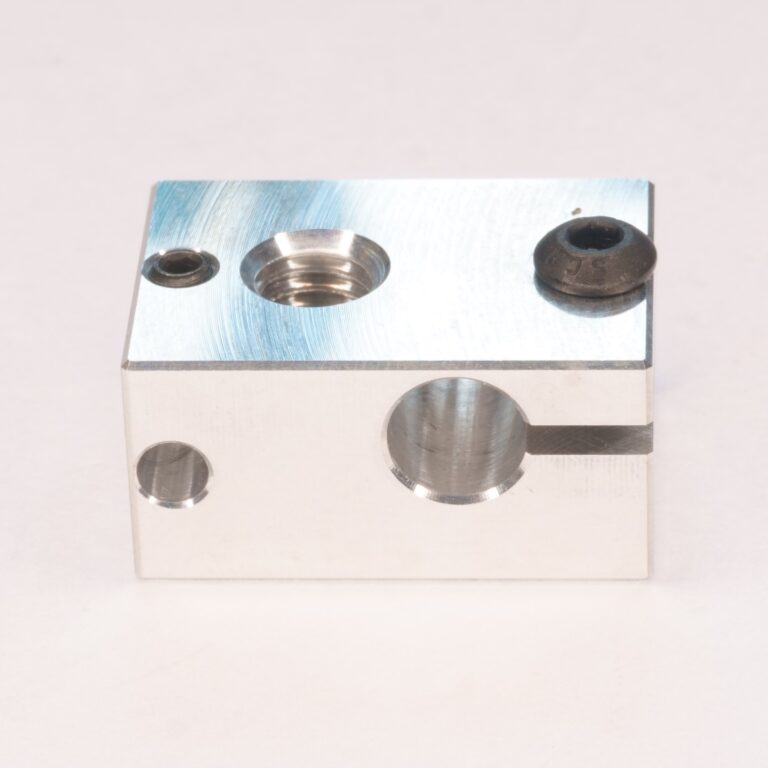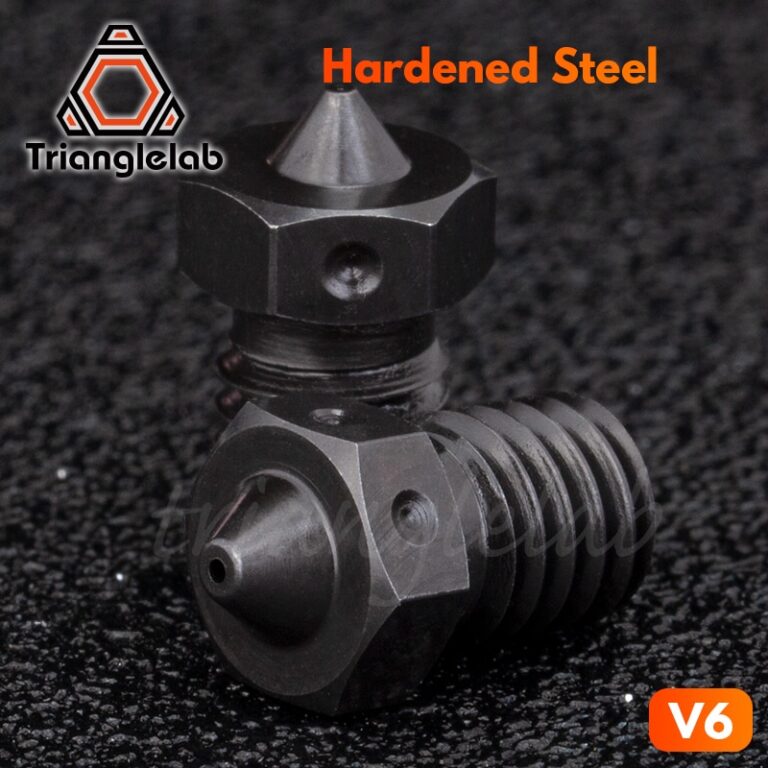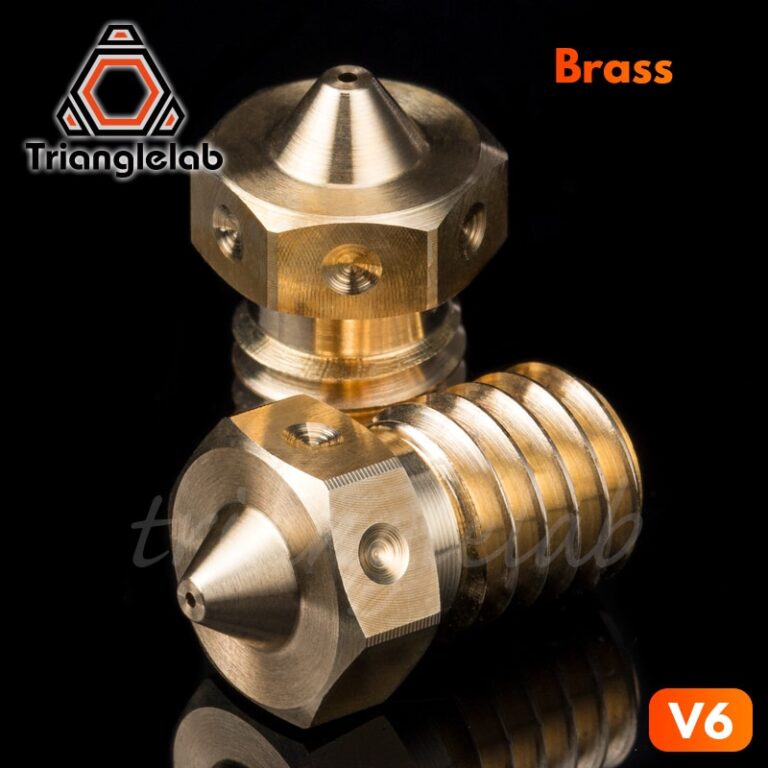V6 Copper heat break
1. Is it a good choice for my 3D printer?
It is suitable for printing high temperature (melting point) filaments, such as ASA, ABS, etc.
This heat break is a mid-range.
It’s purpose is to transfer heat between the heatsink and the top part of the heat break better.
Stainless steel connection the lower and upper part ensures that the heat transfer between them is not that big.
Lower copper parts becomes a part of the heat block considering it will have the same temperature and it creates a bigger melt zone – filament will very probably melt inside the stainless steel tube in this lower copper part of the heat break.
3. Cross-section
This is how a cross-section of a V6 hot end with a copper heatbreak looks like (without the heatsink).
5. Weight
Copper – stainless steel – copper heat break is on the the most heavy ones.
As you can see in the comparison below, the weight is:
Copper heat break: 3.42 g
Titanium heat break: 1.85 g
